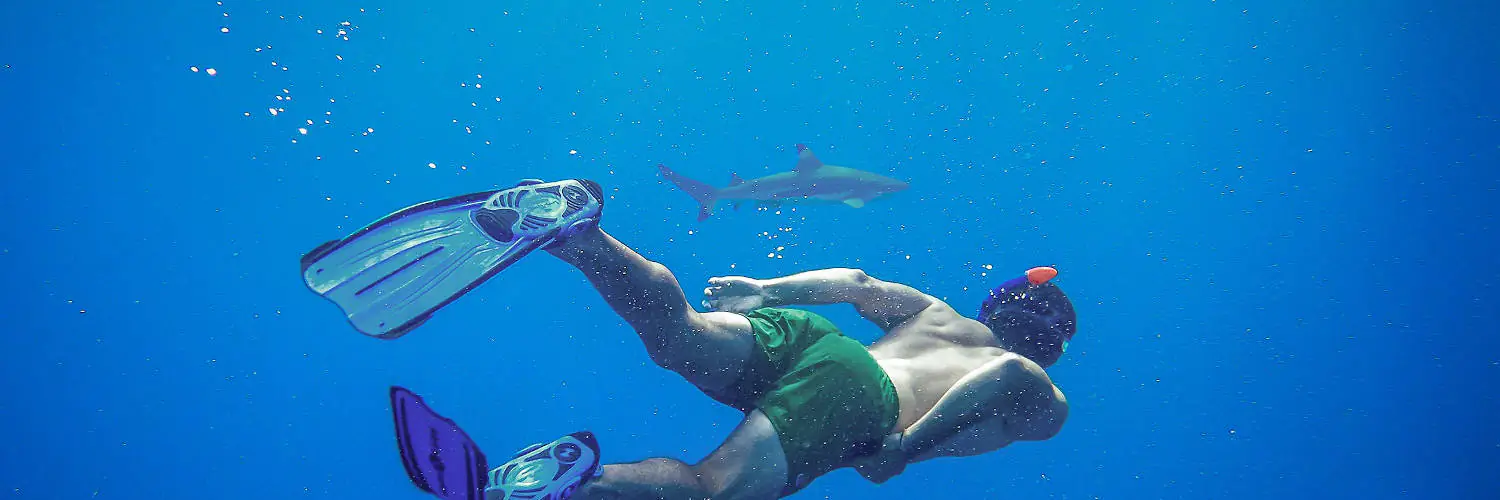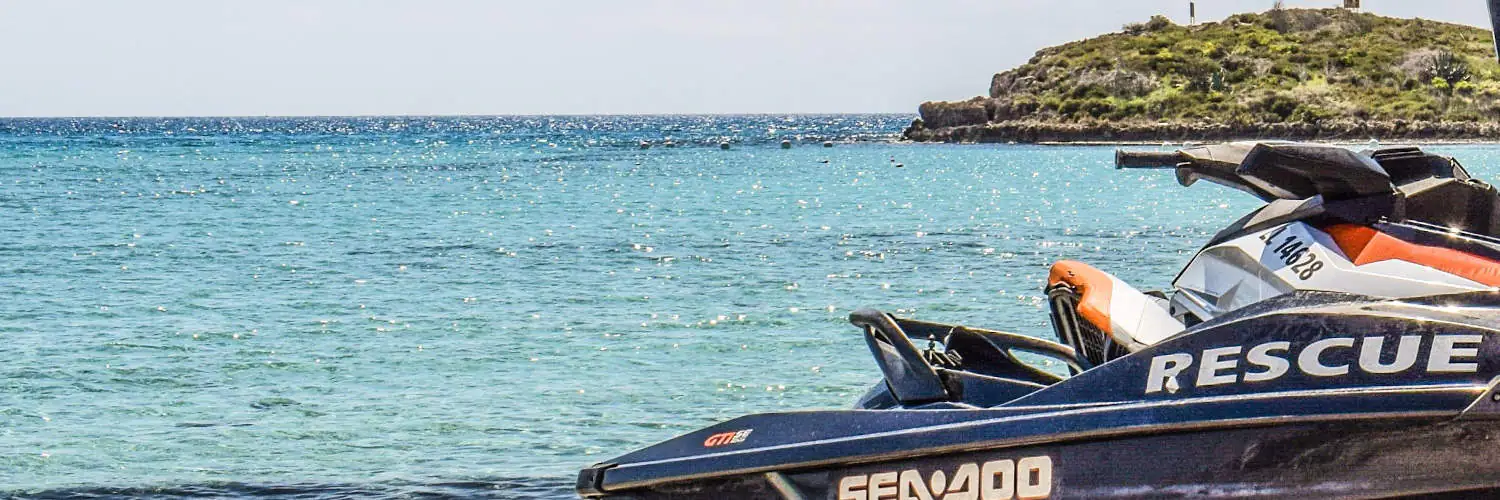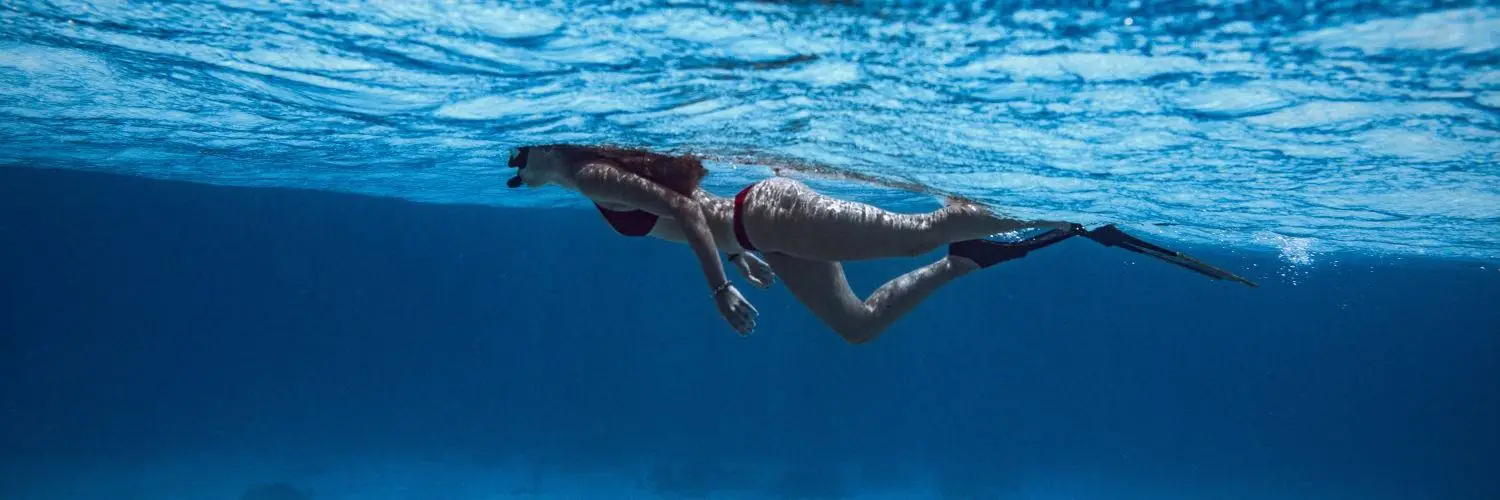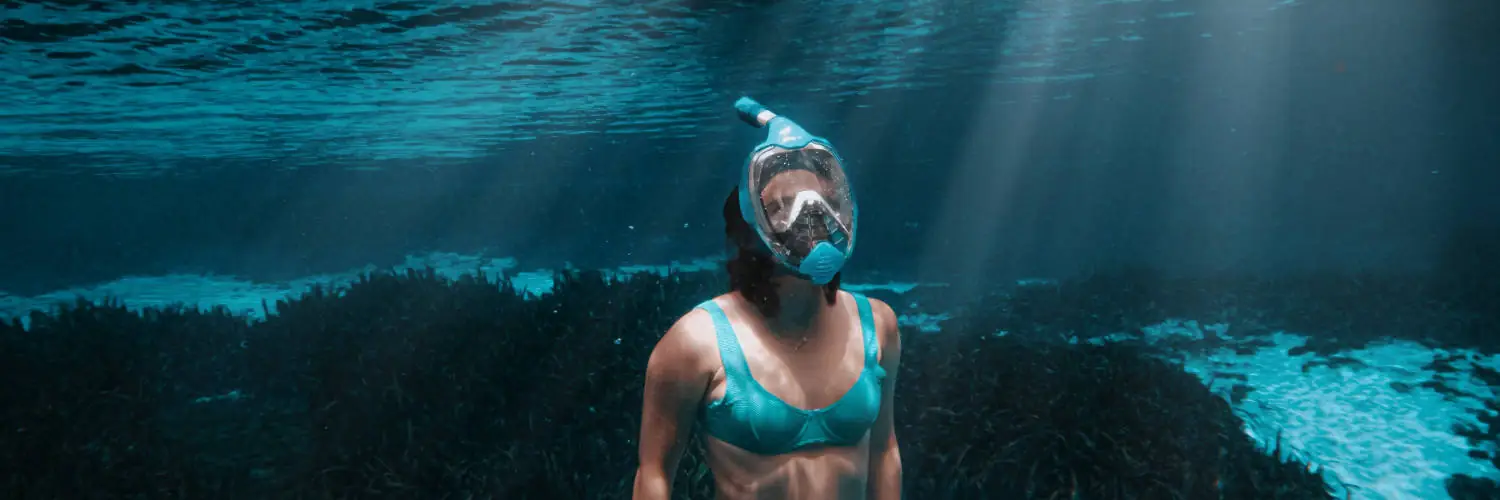Swimming with a mask and snorkel is a fun way to see fish and stay healthy. As a form of low-impact exercise, it is not only accessible to a wide range of people but also provides a means to explore marine life without the need for extensive training or equipment. Doing this thing is good for both body and mind, so many people like to do it with their workout.
The physical health benefits of snorkeling are substantial. It involves swimming with a snorkel and mask, which allows for extended periods of underwater exploration. This sustained, gentle swimming helps to improve cardiovascular health by strengthening the heart muscle. Additionally, it can aid in calorie burn and weight management. Snorkeling helps all your muscles work, making them stronger and able to work longer. It also makes your joints more flexible.
Snorkeling also makes you feel good in your mind. The calm and rhythmic breathing required resonates with meditative practices that are known to decrease stress levels. Also, being in the sun while doing things adds to the vitamin D you get, which helps make your bones strong and is also said to make you feel better. Watching all the different sea animals can make you feel peaceful. This helps to reduce stress and makes snorkeling good for your health.
Table of Contents
Physical and Mental Health Advantages
Snorkeling is good for your body and mind. It has many advantages that help you stay healthy. Engaging in this water-based exercise can enhance cardiovascular and respiratory fitness, build strength and flexibility, and provide considerable mental health benefits.
Cardiovascular and Respiratory Fitness
Doing snorkeling can make your cardiovascular health much better. As an aerobic exercise, it elevates the heart rate, which helps strengthen the heart muscle and improves lung capacity and respiratory health. Doing regular swims helps you to take in more oxygen, which is good for your heart in the long run.
Strength and Flexibility
Snorkeling involves various muscle groups which contributes to overall strength. Leg movements increase leg strength, while arm pulls assist with upper body conditioning. The resistance of water during snorkeling means the core must stabilize the body, aiding in core strength development. Also, swimming makes you more flexible and helps your body move better.
Mental Health and Relaxation
The rhythmic nature of snorkeling’s breathing patterns can have a meditative effect, leading to a state of relaxation and calmness. This thing makes you feel good and helps you relax. It makes you less stressed and worried. Doing this regularly is good for your mind by making stress and worry less.
Skill Development and Safety
Snorkeling helps with water skills and staying safe. Mastery of breathing and buoyancy, coupled with competent equipment handling, forms the foundation of a safe and fulfilling snorkeling experience.
Breathing and Buoyancy Control
Snorkeling needs good breathing and floating skills. People use easy breathing and float patterns. They use a snorkel to breathe. This involves inhaling through the mouthpiece and exhaling forcefully to clear water from the tube. Better breathing helps in water. It makes body feel good. It stops tiredness and fear.
Gaining proficiency in buoyancy is key to interacting respectfully with the underwater world. Regular doing of swimming methods and specific workouts can improve how you float easily, preventing unneeded touching of sea creatures or coral reefs that can cause harm to the environment or yourself.
Equipment Knowledge and Use
Understanding and effectively utilizing snorkeling equipment are fundamental for safety and enjoyment of the sport. The basic equipment typically includes:
- Mask: Ensures clear underwater visibility; must fit comfortably to prevent water intrusion.
- Fins: Aid in swimming with less effort and more speed; should be the appropriate size for the user’s feet.
- Snorkel Tube: Helps you breathe on top of water; a special design stops water from getting in. Helps with not breathing in water.
A snorkeler must also be aware of additional equipment, such as a waterproof camera, which should be secured to avoid loss or entanglement. Before venturing into the water, one should thoroughly inspect all gear for signs of wear or damage, ensuring it functions as intended for a safe snorkeling experience.
Exposure to Marine Environment
Snorkeling is a fun water activity. People can see many sea animals and plants. It is like a tour of the sea.
Marine Life Interaction
When people go in the ocean with a snorkel, they see bright animals like colorful fish, smooth rays, and sometimes big whale sharks. This is special because they see these animals living in the wild. Care should be taken not to disturb the marine life, maintaining a respectful distance to ensure their natural behaviors are preserved.
- Nature Observation: Water below with many living things. People who swim near the top often see different sea animals moving through the water. There are small fast fish and big flat fish.
Environmental Awareness
Caring for Nature When we explore coral reefs and other ocean spots, we see how amazing nature is. We also realize how vital it is to protect marine life. People who snorkel find out how delicate these places are. They start to think more about using products that won’t harm the reefs, like safe sunscreen.
- Coral Reefs Protection: Bright corals are fun to explore when snorkeling. Many people love to see the pretty sea life. They help the ocean a lot but can be harmed by people. Good snorkeling means not touching the reef, to keep it safe for the future.
Therapeutic Effects of Water Activities
Going in water and doing things like snorkeling has many health benefits. It can help people with health problems. Doing these things gives a different way to exercise that is good for joints and muscles without being too hard on the body.
Low-Impact Exercise for Joint and Muscular Health
Swimming with a snorkel is good for exercise, especially for people with sore joints or getting better from hurts. The water helps take some weight off the joints, so you can move without more pain.
- Reduced Joint Stress: Water makes it easier for joints, helps stop joint pain and makes the healing go faster.
- Muscle Strengthening: Doing snorkeling often helps make important muscles stronger. Calves, ankles, shoulders, quads, and hamstrings get stronger because the water makes it harder to move.
Snorkeling can help those with arthritis and spondylitis. It keeps joints moving and lowers swelling. Also, the steady moves in snorkeling can ease stiffness and boost motion for people with mobility issues or neck pain.
Snorkel and other water exercises are great for health and fun, especially for those who need gentle activities.
Lifestyle and Social Benefits
Snorkeling is fun. It helps you relax. You can have adventures too. It makes you happy. People with ADHD and anxiety feel better in water. It’s a good way for them to calm down.
Community and Social Engagement
Snorkeling makes people part of a group who like sea and water things. This friend group can:
- Make friends with people who also like exploring underwater.
- Offer support and friendship, especially for those who are scared of diving.
- Help people relax and feel better, which can improve how they interact with others.
People in these groups can make others do better in snorkeling and choose healthier habits. This can help with problems like being too heavy. Being in these groups can also give people chances to share and have fun together.








